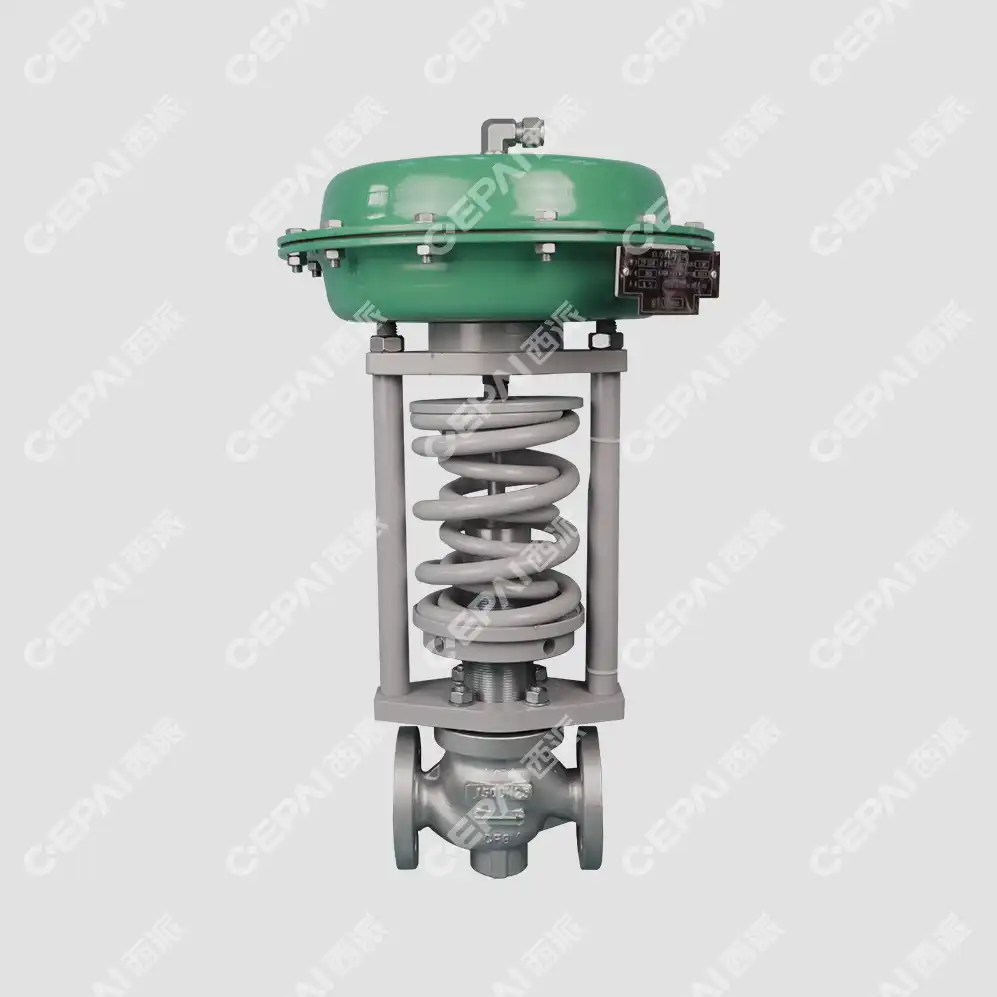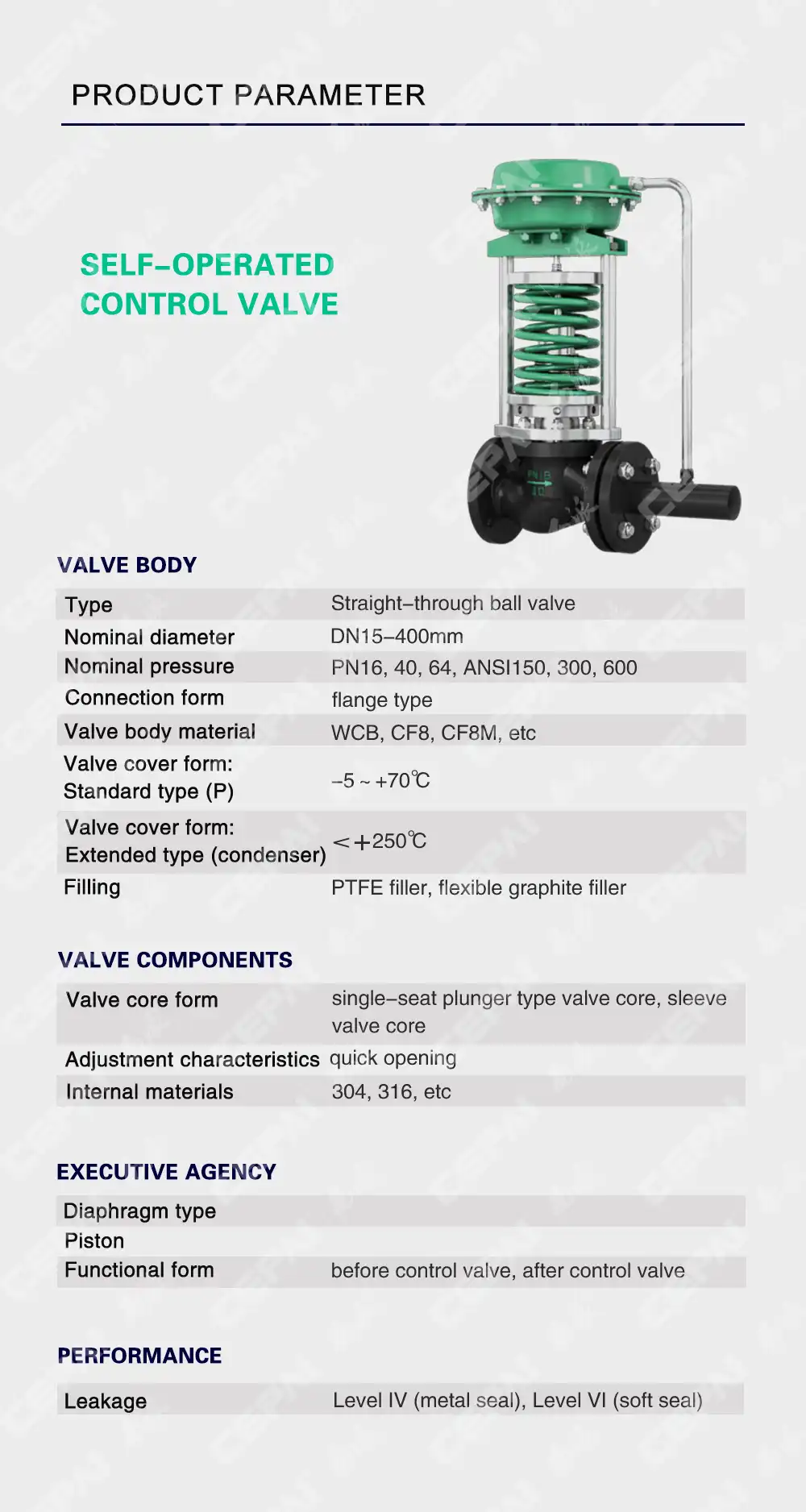Understanding the Mechanics of Self-Operated Control Valves
Basic Components and Their Functions
Self-operated control valves consist of several key components that work in harmony to regulate pressure. The main body houses the valve seat and plug, which are responsible for controlling the flow of fluid. A diaphragm or piston acts as the sensing element, responding to pressure changes in the system. The actuator, typically spring-loaded, provides the necessary force to position the valve plug. These components work together to create a balanced system that can automatically adjust to maintain the desired pressure setpoint.
Pressure-Sensing Mechanisms
The heart of a self-operated control valve's ability to take pressure lies in its pressure-sensing mechanism. This mechanism typically utilizes a diaphragm or piston that is exposed to the process fluid pressure. As the pressure fluctuates, the diaphragm or piston moves, translating this movement into a corresponding change in the valve's position. This direct link between the pressure and valve position allows for rapid and accurate responses to system changes, ensuring precise pressure control without the need for external sensors or controllers.
Force Balance Principle
Self-operated control valves operate on the force balance principle. The pressure of the process fluid exerts a force on the sensing element, which is counterbalanced by the spring force of the actuator. When these forces are in equilibrium, the valve maintains its position. Any deviation from the setpoint pressure disrupts this balance, causing the valve to open or close accordingly. This self-regulating mechanism allows the valve to take pressure by continuously adjusting its position to maintain the desired pressure level in the system.
Types of Self-Operated Control Valves and Their Pressure-Handling Capabilities
Pressure Reducing Valves
Pressure reducing valves are a common type of self-operated control valve designed to maintain a constant downstream pressure regardless of fluctuations in upstream pressure or flow rate. These valves operate by sensing the downstream pressure and adjusting the valve opening to ensure a steady output pressure. They are particularly useful in applications where a high-pressure source needs to be reduced to a lower, stable pressure for downstream processes or equipment protection.
Back Pressure Regulators
Back pressure regulators, also known as pressure sustaining valves, are self-operated control valves that maintain a minimum upstream pressure. These valves open when the upstream pressure exceeds the setpoint, allowing excess pressure to be relieved. This type of valve is crucial in systems where maintaining a minimum pressure is essential for proper equipment operation or process efficiency. Back pressure regulators excel at taking pressure by preventing system pressure from dropping below a critical threshold.

Differential Pressure Control Valves
Differential pressure control valves are specialized self-operated valves that maintain a constant pressure difference between two points in a system. These valves are particularly valuable in applications where flow rate control is critical, such as in heat exchangers or filter systems. By maintaining a constant pressure differential, these valves ensure consistent flow rates regardless of changes in system conditions, effectively taking pressure by managing the relationship between two pressure points.
Optimizing Self-Operated Control Valve Performance in High-Pressure Applications
Proper Sizing and Selection
Selecting the right size and type of self-operated control valve is crucial for optimal performance in high-pressure applications. Undersized valves may not provide sufficient flow capacity, leading to inadequate pressure control, while oversized valves can result in instability and poor control resolution. Factors such as maximum flow rate, pressure range, and fluid properties must be carefully considered during the selection process. Proper sizing ensures that the valve can effectively take pressure across its entire operating range, providing stable and accurate control even under challenging conditions.
Material Considerations for High-Pressure Environments
In high-pressure applications, the materials used in self-operated control valves play a critical role in their ability to withstand and manage pressure effectively. Valve bodies, trim, and seals must be constructed from materials that can resist the corrosive effects of process fluids and withstand high pressures without deformation or failure. Advanced alloys, such as duplex stainless steels or nickel-based alloys, are often employed in extreme pressure environments. Additionally, specialized sealing technologies, like metal-to-metal seats or reinforced elastomers, may be necessary to ensure leak-tight operation under high-pressure conditions.
Maintenance and Monitoring Strategies
To ensure that self-operated control valves continue to take pressure effectively over time, robust maintenance and monitoring strategies are essential. Regular inspections can identify wear, corrosion, or damage before it leads to valve failure. Implementing predictive maintenance techniques, such as vibration analysis or acoustic monitoring, can provide early warning of potential issues. Additionally, periodic calibration and testing of the valve's pressure-sensing and control mechanisms help maintain accuracy and responsiveness. In critical applications, redundant systems or bypass arrangements may be employed to allow for maintenance without disrupting process operations.
Conclusion
Self-operated control valves are remarkable engineering solutions that effectively manage pressure in various industrial applications. Their ability to take pressure autonomously, without external power or complex control systems, makes them invaluable in maintaining stable and efficient processes. By understanding the mechanics, types, and optimization strategies for these valves, engineers and operators can harness their full potential in high-pressure environments. As industries continue to demand more reliable and efficient pressure control solutions, self-operated control valves will undoubtedly play a crucial role in meeting these challenges.
Contact Us
For cutting-edge self-operated control valve solutions tailored to your specific pressure management needs, look no further than CEPAI Group. Our advanced valve technologies offer unparalleled performance, durability, and efficiency in even the most demanding applications. Experience the benefits of our expertise in oil and gas equipment manufacturing. Contact us today at cepai@cepai.com to discover how our innovative self-operated control valves can optimize your pressure control systems.


_1746598538016.webp)



